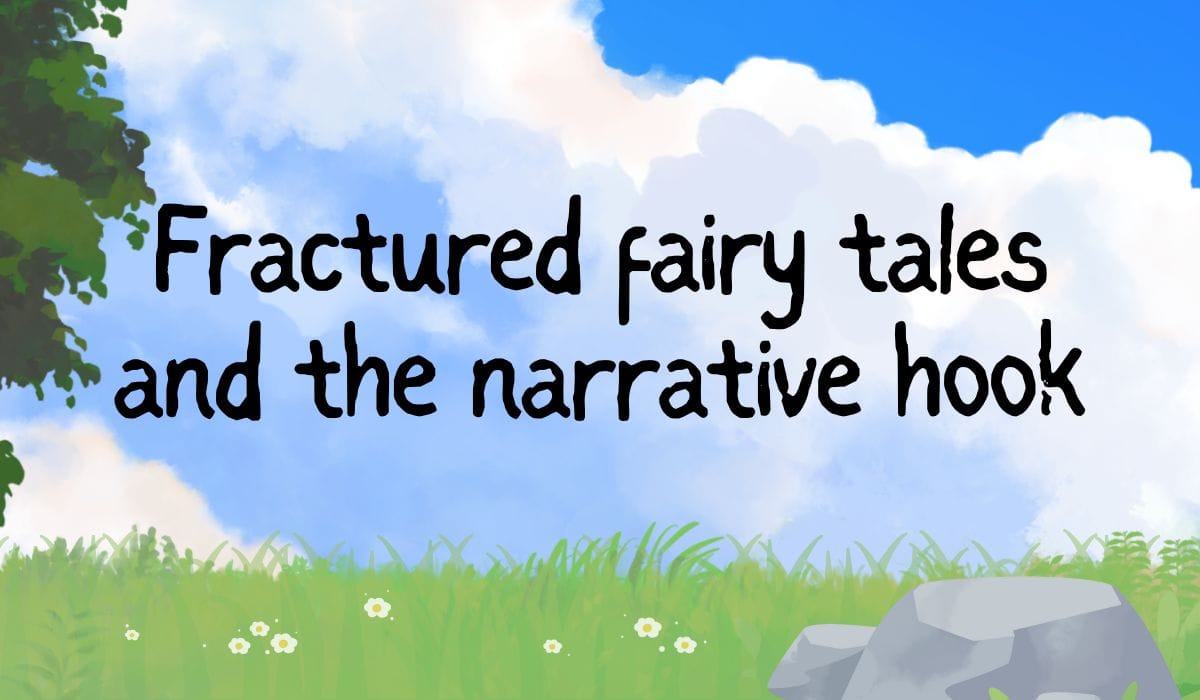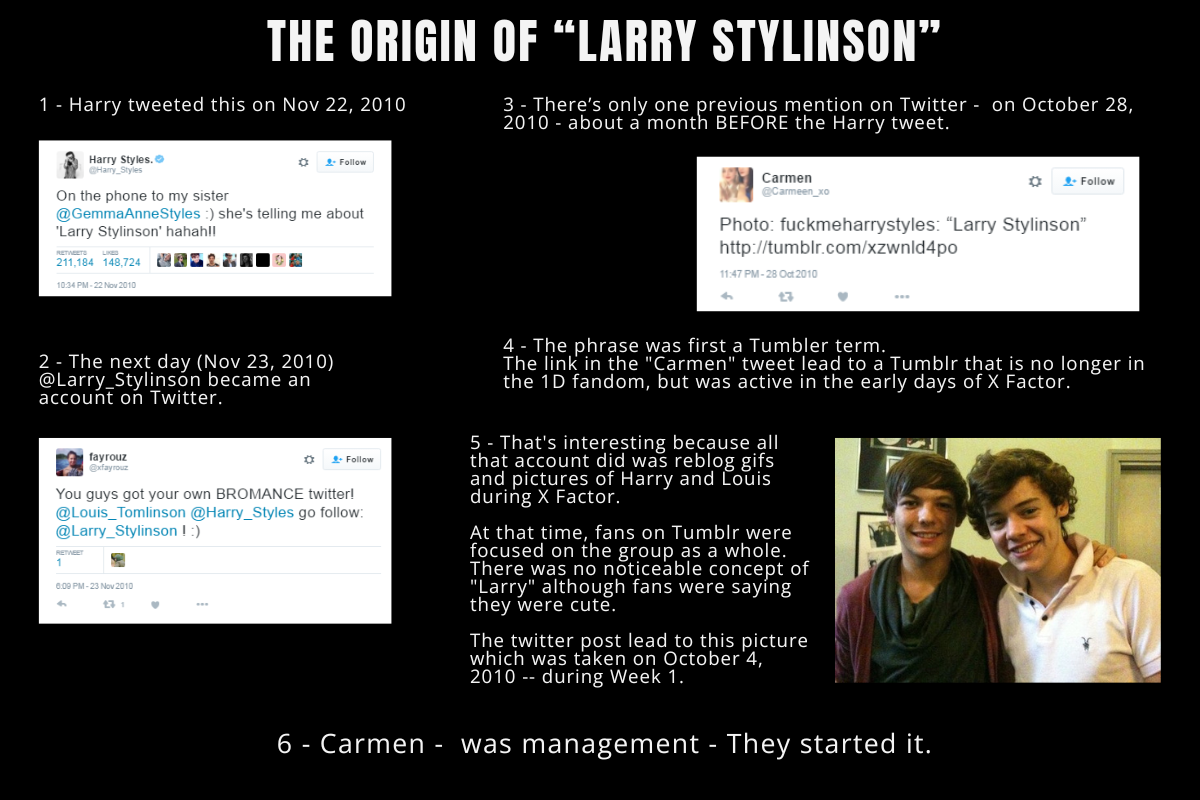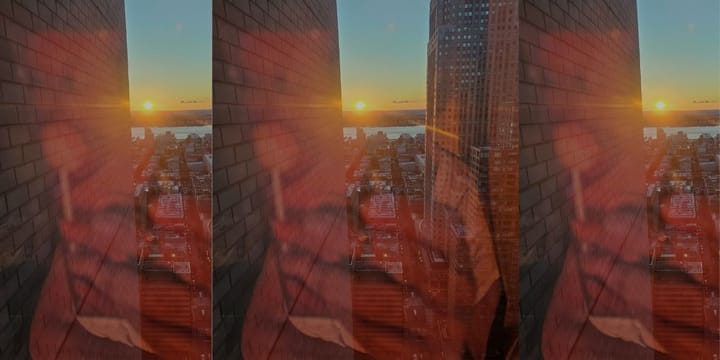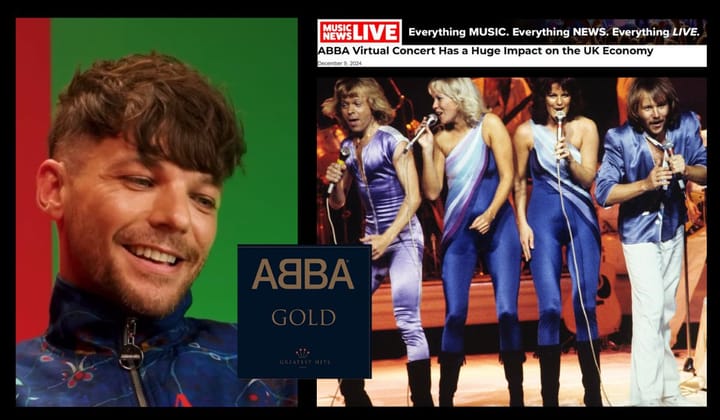Part 2: Simon Spots a Hook or How 'Larry Stylinson' Was Born
Follow up to Simon Cowell: Here we go again

Simon Cowell’s career has always been about turning something raw and chaotic into spectacle, even if it’s cheap, exploitative, or harmful. With Mr. Blobby, he proved to himself and the industry that spectacle doesn’t need depth. You can sell something ridiculous if you package it right.
Less than a decade after Mr. Blobby he moved on with his next exploitation, One Direction. He had five inexperienced, wide-eyed teenage boys. They may not have had experience, but they had chemistry and energy, and Simon would soon discover the magic hook, that one thing.
The Hook: Harry and Louis
Harry and Louis’s early closeness was obvious. It was natural, unforced, and visible. They clicked instantly on X Factor. Whether that was a genuine deep friendship, romantic spark, or simply teenage bonding, it didn’t matter. It gave Cowell something he thrives on, narrative fuel.
Cowell has always understood that the story sells as much as the music. For Will Young (during Cowell’s Pop Idol days) it was his “everyman authenticity.” For Leona Lewis it was her Cinderella rise. For Mr. Blobby it was absurd slapstick. For One Direction, the hook was the boys’ relationships, not just with fans, but with each other.
The Larry narrative fit neatly into the formula. It was ambiguous enough to stir speculation, emotional enough to keep fans hooked, and dramatic enough to create endless online chatter. Whether or not there was truth to it, simply didn’t matter. He needed spectacle. Cowell saw Harry and Louis’s bond as exploitable.
One Direction were kids; he was a veteran in manipulating narratives. That imbalance made them and their fans easy targets.

And so, the seed of Larry Stylinson was planted. Was it a deep friendship? Was it something more? It didn’t matter. The ambiguity was the hook. And Simon Cowell knew exactly how to feed it, just enough to keep fans obsessed, never enough to resolve it. Typical fanfic angst. Contracts kept the details in place while the public relations machine kept the story churning. Was it real? Was it not? Was it being suppressed? Were they being kept apart? The truth never mattered.
If a pink blob could be turned into a Christmas No. 1 single, then teenage intimacy could certainly be turned into a fandom frenzy. The difference was scale.
- Mr. Blobby was absurd slapstick packaged as a pop star.
- Larry Stylinson was human connection packaged as spectacle.
Both tapped into emotion, one through laughter, the other through longing. Both made money. The blurred line between truth and fantasy kept fans engaged, buying tickets, creating content, and living inside the narrative. It was a marketing machine powered by ambiguity.
Cowell’s genius (if you can call emotional exploitation that) has always been the same: take something organic, strip it of its humanity, and sell it as spectacle. Fans still argue today over whether Larry was real, fake, or somewhere in between. But from Cowell’s perspective, it didn’t matter. The story itself was the product.
And when I think back to Mr. Blobby, that giant, ridiculous blob who said nothing but “Blobby!” I can’t help but see the pattern. Cowell learned early that the public will buy almost anything if you give them a hook. Simon Cowell didn’t need to tell the truth. He only needed to feed the fantasy. Just like with Mr. Blobby, the chaos itself was the product. And the boys, especially Harry and Louis, were left carrying the weight of a spectacle they couldn’t control and one that continued long after the hiatus.
But, wait. Why did Cowell keep it going after the hiatus? As long as the machine was making money it was continued. It didn't really take much because the story had taken on a life of its own. Remember, this has absolutely nothing to do with truth. This was a fan manipulation strategy from the start. From there it became a self-propelled rollercoaster. There were narratives fighting each other all along which simply continued the chaos which was valuable engagement and kept the stories going. At some point the story began killing itself. It was no longer sustainable because it was no longer valuable to the machine.
Did contracts end? Did Simon get bored and move on to his next project with Netflix? No doubt something changed recently, and several things can be true at once. Is the fan base being broken up deliberately or is the story just coming to a close to make way for a new one?
But how (technically) did it continue? There were too many moving parts, there were too many photos and timelines and games. How could it possibly have been manipulated? Technology, PR, and algorithms. That was the easy part.



